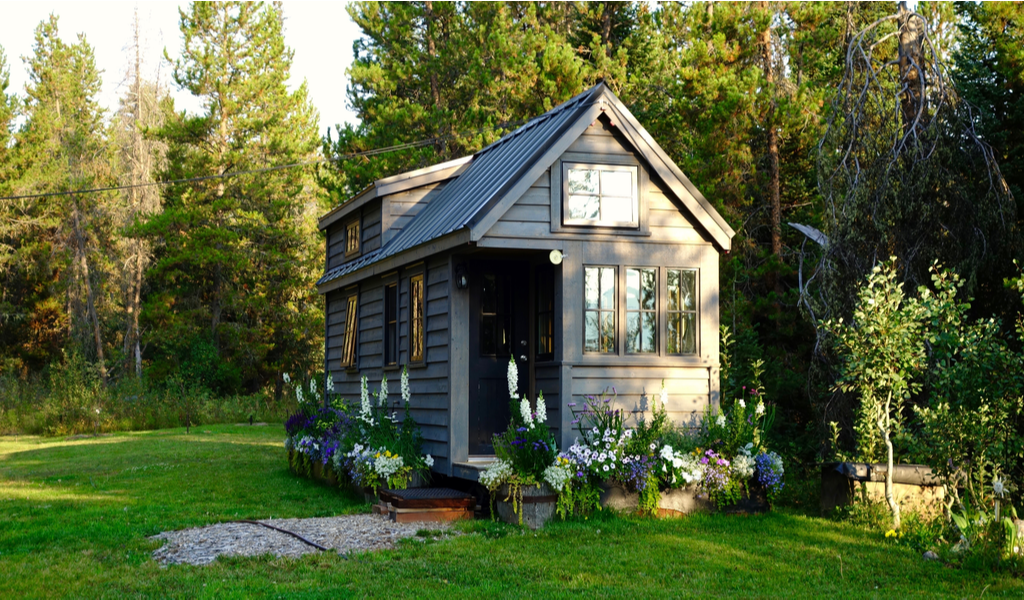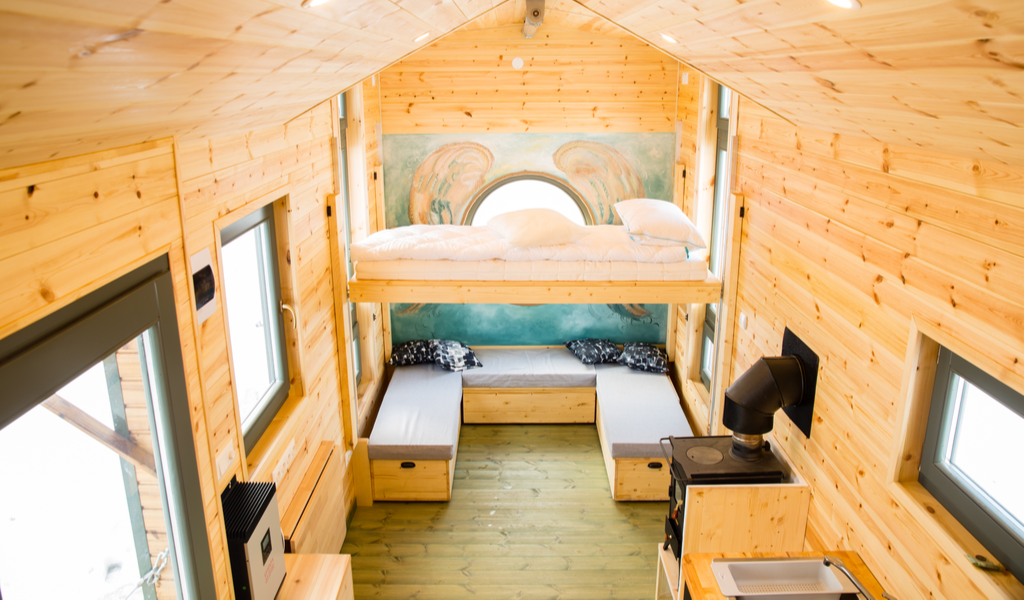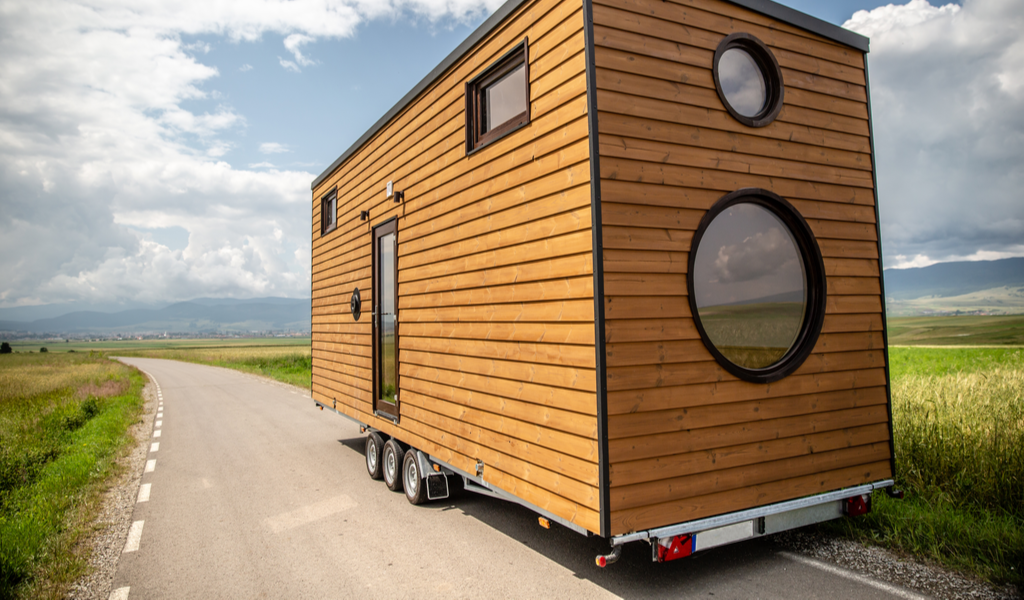If you’ve turned on any reality TV show network over the last few years, you’ll know that tiny homes, or “tiny living” as it’s called, are all the rage these days. Residential properties that are 400 square feet or less are typically classified as tiny homes, although certain definitions say they can be anywhere up to 1,000 square feet. They may also sometimes be referred to as mobile homes or manufactured homes.

If you have been considering making the jump into tiny living, there are a few things to ponder over first. As always, there’s a good side and a bad side to this decision, and here are both of them for your consideration:
The Downside to Tiny Homes
They May Depreciate in Value
Most people consider real estate to be a good investment, even if the property is meant for personal usage. This is because property typically increases in value over time. Therefore, ideally, you can expect to sell your house or land for a higher amount than what you bought it for if you plan on selling it later on.
However, this could be different in the case of a tiny home. Since they only appeal to a niche community, it may not be as easy to find buyers. And if your mobile home is on wheels or lacks a physical foundation, then it will be considered an RV. RVs, like most other vehicles, depreciate in value over time. Therefore, you should be aware that buying a tiny home may not help you build wealth.
It’s Not Easy to Get a Mortgage
Mortgage lenders apply a set of criteria to the proposed property before they even consider a mortgage. For instance, mortgages require that the building has a physical foundation. As tiny homes sometimes do not, this can be tricky to navigate. Many mortgage providers also have a minimum mortgage limit and tiny homes are likely to fall under that limit, automatically disqualifying them.
One way to get around this issue is to get an RV loan or get funding through a tiny home builder. However, you should keep in mind that the interest rates for such loans may be higher than a traditional home loan and you probably won’t be eligible for tax benefits that are available to standard mortgage holders.
Not All Areas Allow Tiny Homes
Finding a place to put down the “roots” of your tiny home can also prove to be challenging. Zoning and building regulations in certain areas have requirements such as a minimum size that your tiny house might not meet. Plus, even if your dwelling is on wheels, you can’t just park it on the side of the road like a vehicle. You will have to look up RV parks or local mobile home communities where you can set yourselves up before going to a different place, and not every city has convenient or safe options to choose from.

Tricky to Find Home Insurance
A tiny home is an investment just like a car or a regular home, so, naturally, you will want to make sure that it is protected. However, it may not be as easy as you think to find a homeowners insurance policy that covers a tiny home. You may find that you only have very few policies to choose from, and fewer options typically mean poorer options.
However, thanks to the rise in their popularity, many insurance providers are now offering mobile home insurance as well. The other option you have is RV insurance, but it won’t give you the sort of coverage that a homeowner typically expects for his dwelling.
Limited Space
The biggest downside to tiny homes is in the name itself – they’re tiny! With just 400 square feet (or even less), there isn’t much space for all the things that we’ve gotten used to in a tiny home. While most mobile homes come with clever storage and space-saving ideas, it’s still not going to offer the same convenience as a traditional abode. Ultimately, this may mean giving up on many of the luxuries that you’ve grown comfortable having.
This is why tiny homes are typically targeted toward individuals or couples. It would be virtually impossible to live in a tiny home for a family that’s larger than 3 people, especially if there are little kids or elders in your care.
The Upside to Tiny Homes
Much More Affordable
It’s not difficult to guess why tiny homes are so popular these days. With the prices for homes and mortgages continuing to skyrocket, buying a house seems like a distant dream for most young people. Tiny homes, on the other hand, are much more affordable as they cost only about one-fifth of a traditional property. From building supplies to the size of the plot of land – you need less of everything. And in the case of a mobile home on wheels, you don’t need land at all!
Not only does this make homeownership much more accessible to more people, but it may also even eliminate the need for a mortgage altogether because the entire cost of a tiny home could be the same as the down payment you would need for a traditional mortgage and you may be able to fund it entirely using a few years of out-of-pocket savings.
No Property Taxes
If your mobile home is built on wheels, it won’t even be considered a residential property, therefore, there would be no need to pay any property taxes at all. Over time, this can save you a boatload of money than if you were the owner of a traditional residence, especially with constantly fluctuating property taxes.
Lower Utility Usage
Tiny homes don’t just cost less to build, they also cost less to maintain. Since there is a much smaller space to power, it takes a lot less energy to keep running. Think about how much money you could save if you could significantly lower your bills for electricity and water!
Plus, many modern mobile homes are built with solar panels as well, making them completely self-sufficient. Others may have composting toilets. Not only is all of this easy on your wallet, but it’s also easier on mother Earth as well.

Allows You to Move Around
Mobile homes are considered the ideal option for those who don’t like the idea of living in one place for their whole lives. Living in a mobile home allows them to travel around the country, helping them explore and experience different places in a way that wouldn’t be possible otherwise. At the same time, not only are they able to save money on hotel rooms and certain other travel-related expenses, but they are also taking their home with them wherever they go – and who wouldn’t love that idea.
A Minimalist Lifestyle
Many people also consider tiny living a lifestyle shift. Many tiny homers also adopt minimalism, not only because there isn’t much space for lots of things anyway, but also because they feel they do not need these things.
Even though you may have to give up a lot of the “luxuries” you’ve grown to believe you absolutely need, you may find that you don’t actually need them all that much. Tiny living forces you to take the plunge and get started on living a life that isn’t attached to material things as the first step is always the scariest one.



